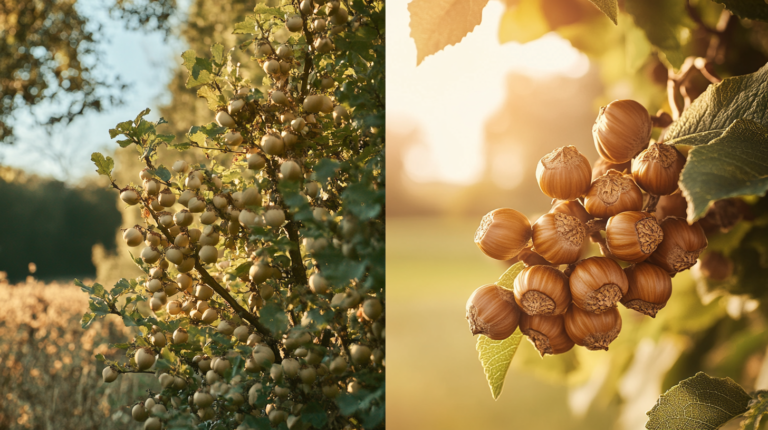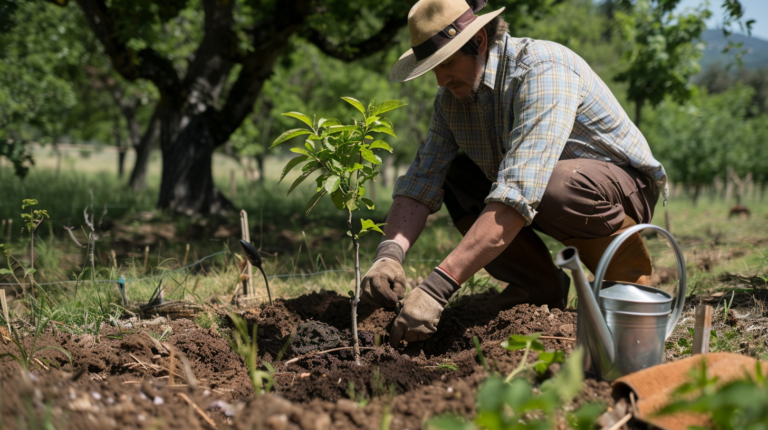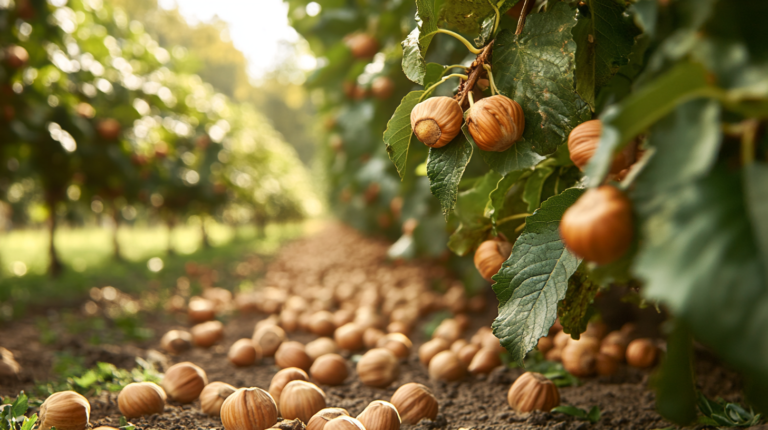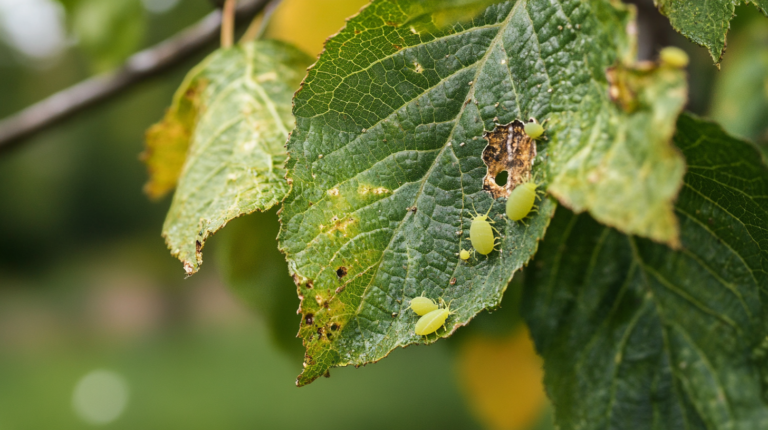Sustainability Practices in Hazelnut Cultivation
Hazelnut cultivation is a significant agricultural activity worldwide, particularly in countries like Turkey, Italy, and the United States. As consumer demand for hazelnuts continues to grow, there is an increasing emphasis on implementing sustainable practices in their cultivation. This article explores various sustainability practices in hazelnut farming, focusing on environmental conservation, economic viability, and social responsibility.
Environmental Sustainability
Soil and Water Conservation
One of the primary concerns in sustainable hazelnut farming is the conservation of soil and water. Techniques such as cover cropping and drip irrigation play crucial roles in achieving these goals. Cover cropping involves planting crops like clover or grasses between hazelnut trees to prevent soil erosion and retain moisture. This practice not only protects the soil but also enhances its fertility by adding organic matter1.
Drip irrigation systems are another vital component of sustainable water management. By delivering water directly to the plant roots, these systems minimize water wastage and ensure that crops receive adequate hydration even during dry spells1. This efficient use of water resources is essential in regions facing water scarcity.
Biodiversity Enhancement
Promoting biodiversity within hazelnut orchards is another critical aspect of sustainable farming. Planting native vegetation around orchards attracts pollinators and beneficial insects, which aid in natural pest control. This approach reduces the need for chemical pesticides, thereby protecting the environment and promoting a balanced ecosystem1.
Integrated Pest Management (IPM)
Integrated Pest Management (IPM) is a sustainable approach to controlling pests and diseases in hazelnut farming. IPM involves monitoring pest populations and using biological controls, such as predatory insects or organic pesticides, only when necessary. This strategy minimizes the use of synthetic chemicals, safeguarding both the environment and the health of farm workers1.
Economic Sustainability
Regenerative Agriculture
Regenerative agriculture is gaining traction in hazelnut farming as a means to improve soil health and increase resilience to climate change. This approach focuses on enhancing soil organic matter through practices like composting hazelnut shells and other organic waste. These actions not only reduce waste but also provide nutrient-rich soil amendments for orchards2.
Additionally, regenerative agriculture involves optimizing water consumption and conducting carbon sequestration assessments to reduce the carbon footprint of hazelnut cultivation2. These practices contribute to long-term economic sustainability by improving crop yields and reducing input costs.
Market Dynamics and Expansion
The global market for hazelnuts is expanding, with countries like India increasing funding for cultivation due to growing consumer demand3.
Despite challenges such as climate change affecting yields in traditional growing regions like Italy, new markets are emerging in North America and South America. These regions are exploring opportunities for expanding hazelnut production to meet rising demand3.
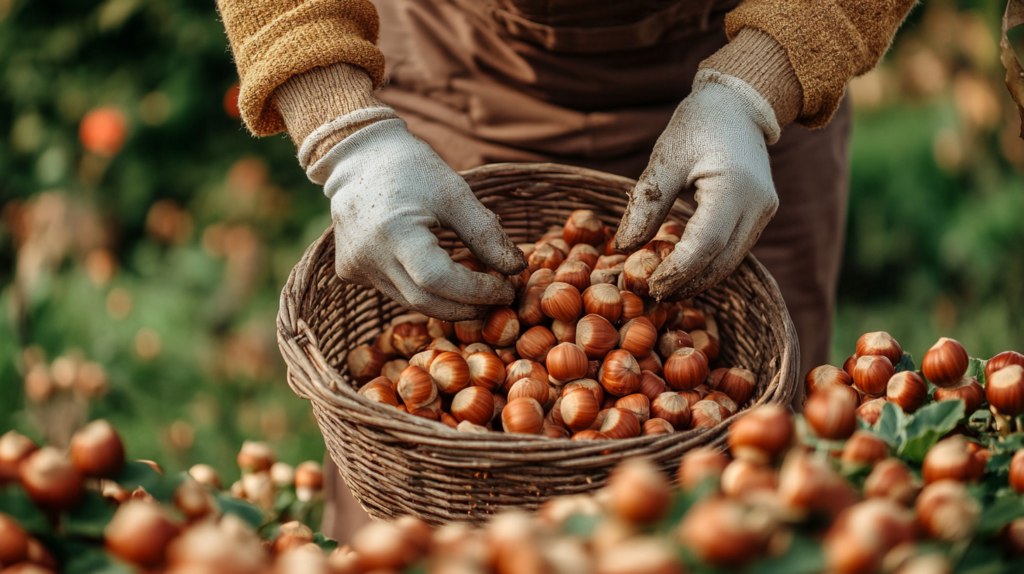
Social Responsibility
Fair Labor Practices
Ensuring fair labor practices is a critical component of sustainable hazelnut farming. Many hazelnut farms rely on migrant workers who often face poor working conditions. Organizations like UTZ are working towards certifying hazelnut orchards to improve labor conditions by setting standards for fair wages, safe working environments, and prohibiting child labor4.
Community Engagement
Engaging with local communities is essential for fostering social sustainability in hazelnut farming. Companies like Ferrero have launched initiatives to improve living conditions for agricultural workers and their families while promoting supply chain transparency5.
These efforts include educational programs for children and partnerships with organizations like the International Labour Organisation (ILO) to eliminate child labor5.
Challenges and Future Directions
Climate Change Vulnerability
Hazelnuts are vulnerable to climate change impacts such as extreme weather events, which can significantly affect yields. For instance, Italian farmers have faced droughts and excessive rainfall, leading to reduced harvests3.
To mitigate these challenges, farmers are adopting climate-resilient practices such as selecting drought-tolerant cultivars and improving irrigation efficiency.
Technological Innovations
Technological advancements play a crucial role in enhancing sustainability in hazelnut farming. The digitization of data collection processes helps monitor compliance with sustainability standards and improve farm management practices4.
Tools like Akvo Flow enable better data visualization and decision-making, ensuring that farms adhere to best practices for environmental conservation and social responsibility4.
Conclusion
Sustainability practices in hazelnut cultivation encompass a wide range of strategies aimed at preserving the environment, ensuring economic viability, and promoting social responsibility. By adopting techniques such as soil conservation, biodiversity enhancement, regenerative agriculture, and fair labor practices, the hazelnut industry can become more resilient and sustainable.
As global demand for hazelnuts continues to rise, it is imperative that farmers, companies, and governments collaborate to implement these practices effectively. Through innovation and commitment to sustainability principles, the hazelnut industry can contribute positively to environmental conservation while providing economic opportunities for communities worldwide.
Sources:
[1] https://hazelnuts.au/articles/viewArticle/sustainable-hazelnut-farming-the-future-of-the-industry
[2] https://www.ferrerosustainability.com/int/sites/ferrerosustainability_int/files/2023-06/20230606-2022_hazelnut_report-light_0_0.pdf
[3] https://www.cardassilaris.com/news/a-look-into-the-hazelnut-industry-recent-developments-potential-markets-and-sustainability-initiatives
[4] https://akvo.org/stories/europe/working-towards-sustainable-hazelnut-production-in-turkey-with-utz/
[5] https://www.ferrero.com/int/en/news-stories/news/ferrero-launches-new-hazelnut-sustainability-commitments-building-on-3-year-achievements
[6] https://www.worldwildlife.org/magazine/issues/spring-2021/articles/hazelnuts-great-for-the-environment-but-vulnerable-to-climate-change
[7] https://www.mdpi.com/2071-1050/15/13/10702
[8] https://www.ferrero.com/au/en/people-planet/source-our-ingredients-sustainably/hazelnuts
[9] https://brandonbioscience.com/sustainable-agriculture-trends/
[10] https://igrownews.com/what-to-know-about-sustainable-agriculture-funding-in-2024/
[11] https://www.foodnavigator.com/Article/2024/07/31/climate-smart-food-hazelnut-farming-with-ferrero


